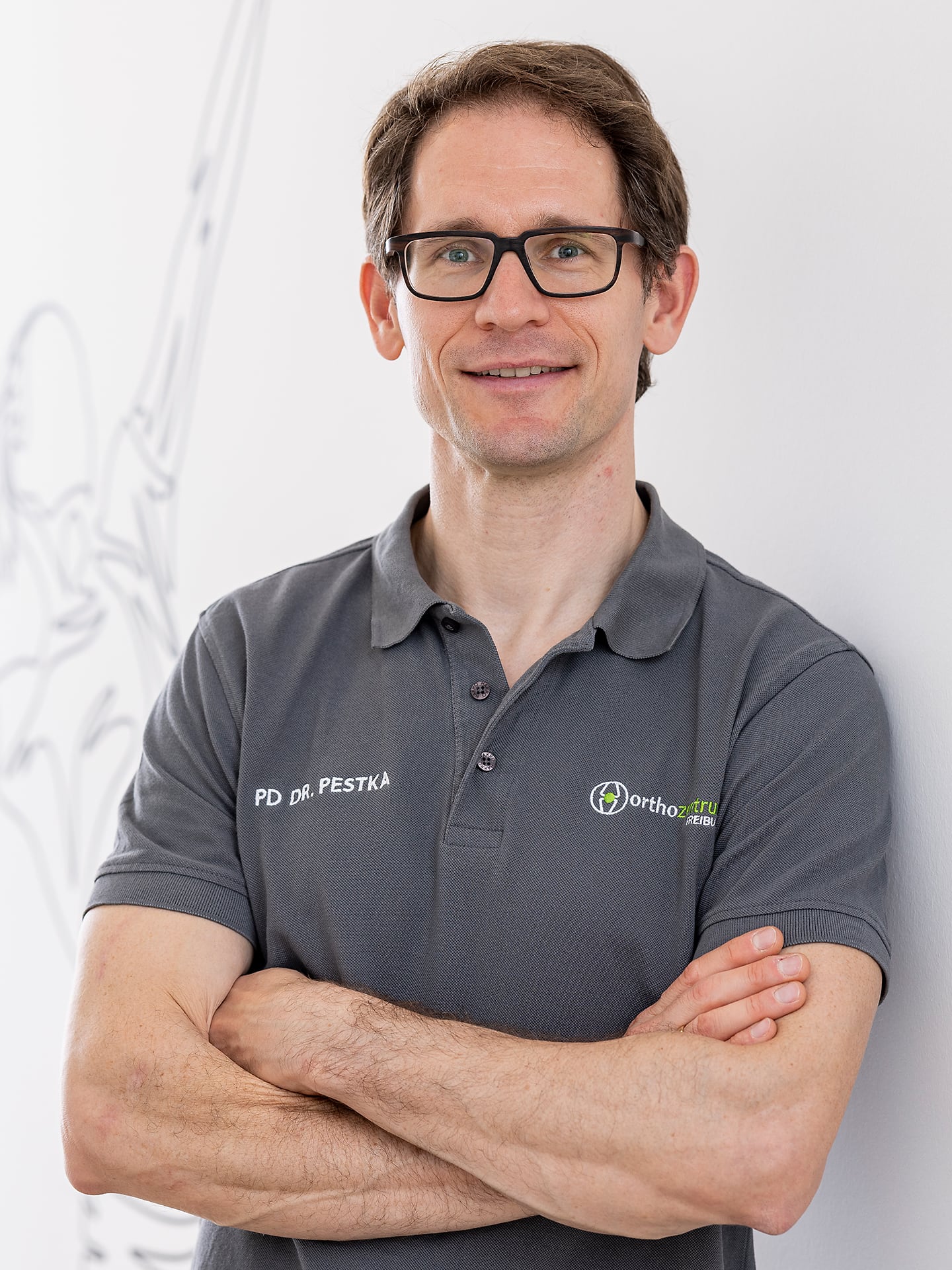Anatomy & Function
Lumbar syndrome, also known as lumbar spine syndrome, is a collective term for pain in the lower back. These can occur suddenly (acute) or have been present for a long time and recur (chronic). Acute pain in the lumbar spine is also colloquially referred to as "lumbago."
Compared to the cervical and thoracic spine, the lumbar spine is exposed to a particularly high load, as it supports the entire torso. This is why pain in the lumbar spine is a very common complaint.
Symptoms & Complaints
Signs of lumbar syndrome may include:
- Lower back pain
- Sudden pain on exertion
- Restricted movement of the spine
- Gentle posture
Since lumbar syndrome is a collective term for any pain in the lumbar spine, lower back pain is an obligatory symptom. This pain can be aggravated during certain movements, such as lifting heavy objects or standing or sitting for long periods of time.
Causes
Causes of lumbar syndrome include:
- Spinal stenosis
- Spondylolisthesis (slipped vertebra)
- Misalignments of the spine (e.g. scoliosis)
- Inflammations
- Facet joint syndrome
- Tumors
- muscle strains, muscle tensions
- Vertebral fractures e.g. in osteoporosis
- Herniated disc (prolapse)
Back pain can be divided into specific and non-specific back pain. Specific back pain is based on a specific disease. Non-specific back pain, where no cause can be found, is much more common.
Diagnosis
The aim of diagnostics is primarily to distinguish whether specific or non-specific back pain is present, i.e. whether a disease underlies the back pain.
Our spine specialist Priv.-Doz. Dr. Pestka will first have a detailed discussion with you about your complaints. Among other things, you will be asked questions regarding the trigger and the severity of the pain.
A physical examination is then performed. The spine is examined for malpositions, palpated and tapped. Often, a so-called hard tension, a hardening of the muscles, can be palpated in the area of pain. In addition, the mobility of the spine is checked.
To test for nerve involvement, muscle strength, sensitivity, and reflexes are examined. In addition, other tests, such as the Lasègue test, can be performed: The person to be examined lies on his or her back and the examiner raises the stretched leg. If the person being examined now feels a shooting pain, this indicates irritation of a nerve, as occurs, for example, in the case of a herniated disc.
Above all, it is important to exclude warning signs that indicate an acute illness requiring rapid therapy.
Warning signs of back pain include:
- Fever or weight loss
- Sensory disturbances, e.g. tingling or numbness in a region of the body
- Muscle paralysis
- Attenuated muscle reflexes
- Disorders of bladder and bowel emptying
- Night pain
- Deterioration trend
If such symptoms exist, the diagnostic workup must be extended and imaging should be initiated.
If there are no warning signs and there is no indication of a specific cause of the pain, the patient has a non-specific back pain for which no further diagnostics need to be performed.
Treatment
The following treatment options refer to non-specific back pain, i.e. that no evidence of a specific disease has emerged during the diagnostic process. In the case of specific back pain where a cause has been found, specific therapy must also be initiated.
Conservative therapy:
The following conservative therapies are available:
- Drug therapy: analgesics
- Physical therapy: heat
- Physiotherapy
- Back School
- Spinal nerve analgesia
Painkillers from the group of non-steroidal anti-inflammatory drugs (NSAIDs) are of great importance in the treatment of lumbar syndrome. Without the use of painkillers, sufferers often experience a vicious circle: the back pain leads to a protective posture and everyday movement is restricted or even stopped altogether. This leads to further muscle tension and the pain worsens. Therefore, it is essential to relieve the pain with medication and to continue to integrate sufficient physical activity into everyday life. In addition, heat applications, for example a hot water bottle, on the affected areas can be helpful.
In physiotherapy, muscle tension can be relieved and the trunk muscles strengthened to relieve pressure on the spine. In a back school, among other things, additional knowledge is to be imparted on how everyday life can be designed in a way that is gentle on the back. This includes, for example, lifting a heavy object while squatting and with a straight back. Back-friendly sports, such as swimming or cycling, can also relieve the strain on the back.
For acute and chronic lumbar syndromes, infiltration treatment can provide relief. A local anesthetic (possibly mixed with an anti-inflammatory drug) is injected into the joint region of the motion segment.

